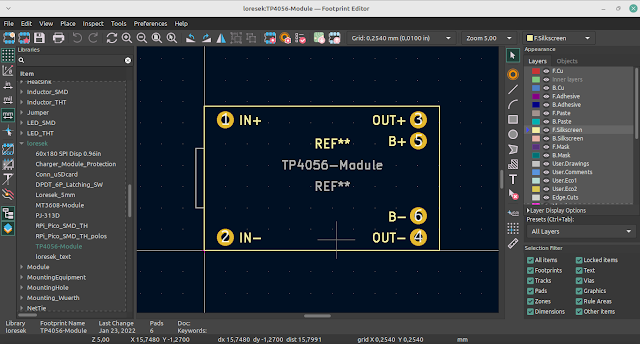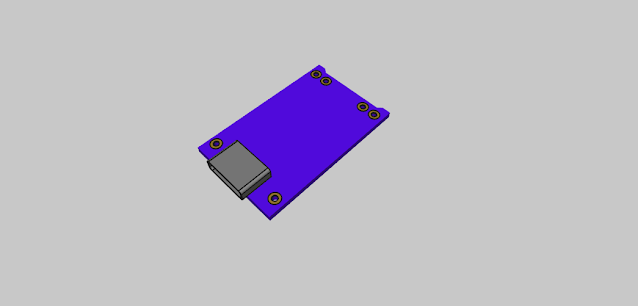Super Nintendo Advanced Flash Cartridge (SNES-8XJ4D-01A) - A Game-Changer for Retro Gaming Enthusiasts
For retro gaming enthusiasts looking to explore the Super Nintendo library, the Super Nintendo Advanced Flash Cartridge (SNES-8XJ4D-01A) KiCad project provides a feature-rich, DIY solution. Designed to be flashed with an open-source cart reader or compatible ROM programmer, this cartridge is compatible with a large portion of the SNES game library, covering over 95% of titles that don’t require additional co-processors like SA-1 or SuperFX.
Key Highlights
This cartridge stands out because it’s made entirely of new, off-the-shelf components, eliminating the need for donor boards—a major perk for sustainability and quality. If you’re accustomed to sourcing parts on eBay or AliExpress, this board can save you the hassle, as it’s made from reliable components that you can source through trusted suppliers or get directly through the provided PCB links.
Technical Features
The SNES-8XJ4D-01A supports both standard and expanded memory maps, offering versatility for various games:
- Memory Map Compatibility: LoROM, HiROM, ExLoROM, and ExHiROM modes are supported, which means it can cover nearly every game’s unique memory setup.
- Multicart Options: With a simple DIP switch, you can program two games onto a single cartridge. You can switch between them using the SNES reset button, which opens up opportunities to create multicarts with two games of the same or different memory mappings.
- Memory Capacity:
- ROM: Supports up to 8 MB for a single game or 4 MB per game on a multicart.
- RAM: Offers up to 32 KB for one game or separate 32 KB banks for each of two games, depending on your configuration.
The cartridge is highly adaptable, using DIP switches for on-the-fly configuration without soldering, which adds flexibility in testing and adjusting memory maps or game setups.
Open-Source Accessibility
True to open-source values, this project makes all Gerber files, Bill of Materials (BOM), and instructions publicly available, ensuring full transparency. Users can order the PCB from a preferred fabricator or via PCBWay or Etsy, where single boards are available for those who don’t want to order in bulk. Every part of this project is tailored for user control and customization, with guidance on how to select and solder parts to meet specific needs.
Getting Started: Essential Tools and Considerations
For building this cartridge, users should be comfortable with basic soldering techniques and have access to a few key tools:
- Soldering iron and hot plate: These are essential for mounting components and ensuring stable connections.
- Programming Tools: Either the Open Source Cart Reader (OSCR) or the T48 programmer with a TSOP48 adapter can be used to load games and data onto the cartridge.
- PIC Programmer: If you need the lockout chip (PIC12F629), a T48 programmer or similar tool can program the SuperCIC code.
Assembly and Configuration Tips
For assembly, the project wiki has essential tips on handling specific steps, such as applying Kapton tape to protect the cartridge contacts during soldering. Various configurations depend on memory mapping, RAM requirements, and game size. Here’s a quick guide:
- Group A Components: For basic games with up to 4 MB and no RAM, this is all you need.
- Group B: Adds 32 KB of RAM, which is necessary for games that require it. For multicarts, the AS6C1008 chip is recommended.
- Group C and D: These are additional components for games larger than 4 MB and multicart support.
Switch Settings and Adjustments
The cartridge’s functionality is easily adjustable through DIP switches:
- Memory Mapping: LoROM/HiROM is selected through Switch 1.
- SRAM Size: Set through Switch 2 with configurations of 2 KB, 8 KB, or 32 KB.
- Extended Modes: Switch 3 allows switching to ExLoROM/ExHiROM.
- Multicart Options: Switches 4 and 5 help set up multicart functionality, enabling combinations of LoROM and HiROM games on the same board.
The project includes a workaround for version 1.1 boards, which requires users to remove specific resistors to avoid save battery issues. This attention to detail can extend battery life, offering up to 25 years of gameplay with a CR2032 battery based on usage.
Buyer and Builder Notes
The creator emphasizes that this project is best suited for personal use due to the risks involved and the open-source license. It’s important to remember that any commercial use of homebrew games or fan-made labels requires proper permissions to respect the original creators.
Verdict
Overall, the Super Nintendo Advanced Flash Cartridge (SNES-8XJ4D-01A) project presents a well-rounded and highly customizable solution for SNES enthusiasts and developers alike. By making the build fully open source and straightforward, this project democratizes retro gaming, making it accessible to a broader audience.
For those who want to revive their SNES experience with a modern, easy-to-program cartridge, this project is a great option. With just the right equipment, patience, and adherence to the instructions, you’ll be well on your way to building your custom SNES cartridge—one that covers a vast array of games and is robust enough to stand the test of time.











